| BRAZIL FISHING REPORT OCTOBER 26-NOVEMBER 2, 2017
We were fishing for arapaima.
|
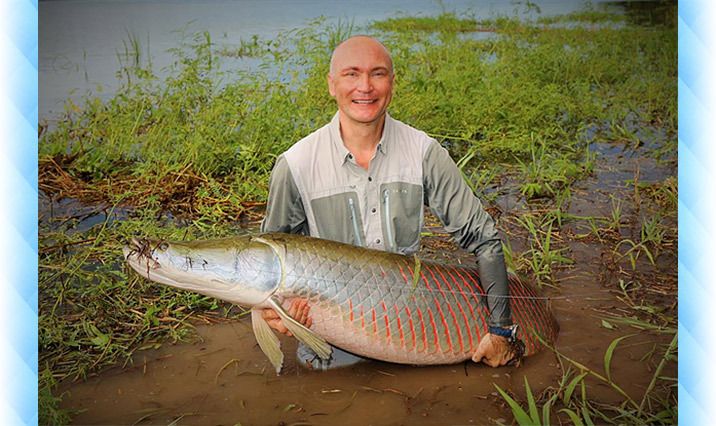 |
|
A group of our regular clients from Ukhta (Russia) had been to Brazil a few times before. They had been fishing successfully for various fish species here, including the peacock bass and payara. And each time we got excellent trophies and had a great time. But this time, the guys asked us to arrange a special fishing for arapaima to add this unique trophy to their collections. |
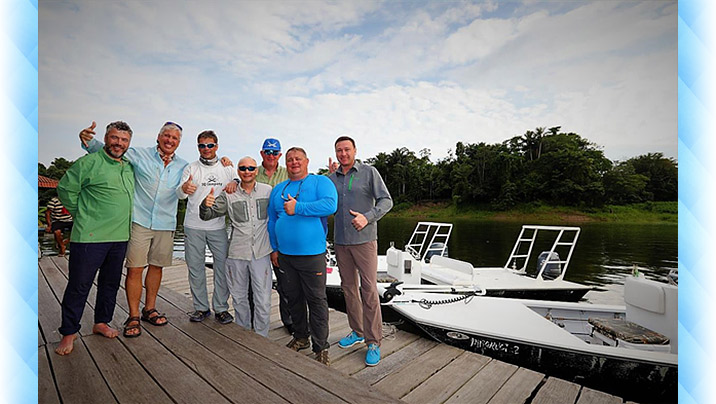 |
|
The arapaima is one of the oldest fish on our planet, it lived in the Dinosaur Times and it has not changed at all over the past 250 million years. Just before our trip, 3 more fishermen from Moscow and Kamchatka joined our group and together we went to Brazil for this living fossil. |
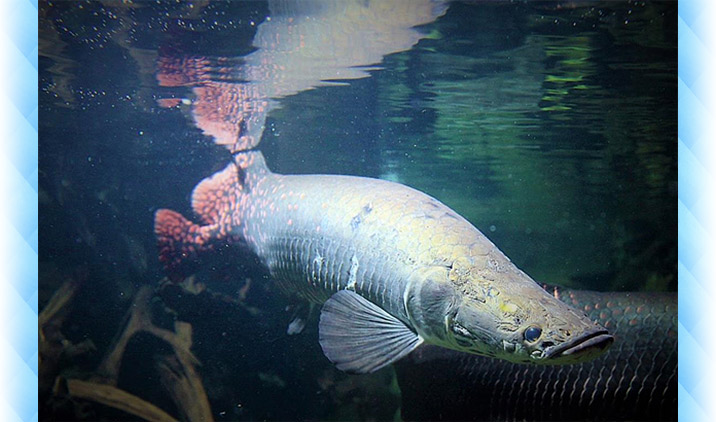 |
|
For this tour I had chosen one of the few places on the planet where we could efficiently fish in the wild nature of Amazonia living quite comfortably. A lot of our clients are waiting for this report, as according to all the previous practice, arapaima tours used to be associated with tent living in the jungle, complex logistics, and a chance to go home without a single strike. |
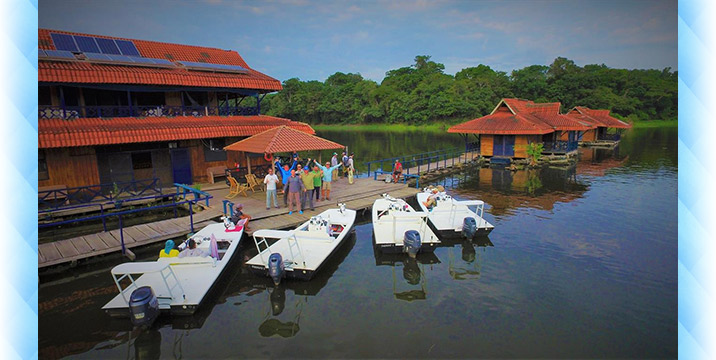 |
|
My approach to organizing fishing tours with Royal Safari is as follows: I must check the level of service and the quality of fishing personally, before taking our clients to a new place. In 2016 my wife and I had a rare opportunity to be among the first anglers in the world to fish in the National Park by special permission. |
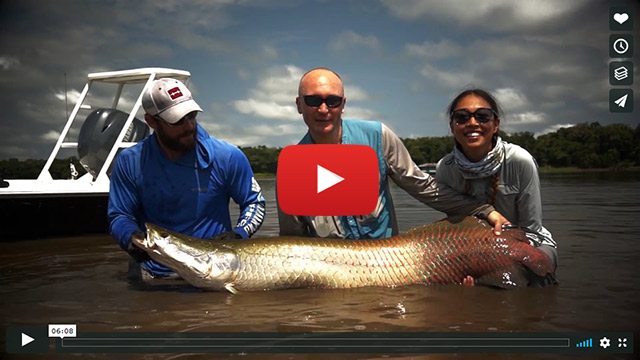 |
|
For many years the fishing had been forbidden here, and the scientists were able to completely restore the population of arapaima. Last year our Brazilian partners arranged test fishing here and managed to prove to the representatives of the Ministry of Natural Resources Protection that sport fishing based on the “catch and release” principle does not cause any damage to the population of arapaima and provides biologists with the valuable data. As a result, the Brazilian Authorities allowed several tours per year for the groups of up to 8 fishermen. 2017 was the year of the commercial launch of the project. |
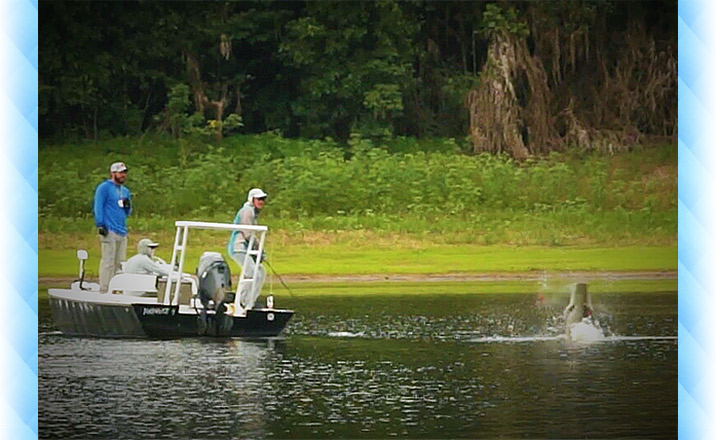 |
|
We arrived in Manaus on October 26th, left the things at the hotel, and went to the Rio Negro to swim with freshwater dolphins. The Indians have trained these mammals to be taken pictures with tourists for a treat of small fish. Dolphins live in the wild, but during the daytime they willingly pose in front of the cameras. |
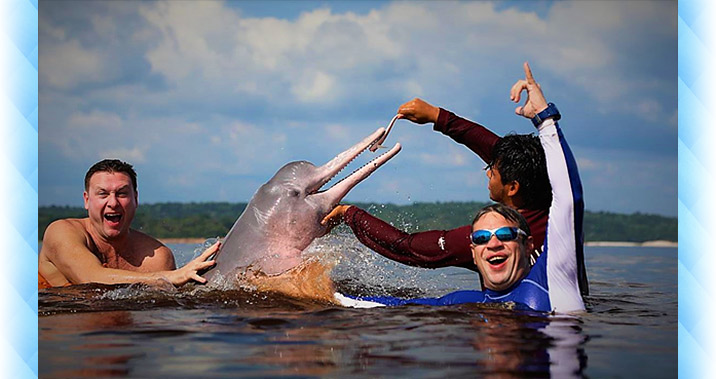 |
|
We decided to take a swim on the nearest beach. Hardly had several minutes passed when the dolphins came to us, and the only thing we had to do was to call an Indian with a bucket full of fish to entice them out of the water.
A contact with wildlife is always a great experience, but this time, the men who had seen a lot of different mammals before were splashing with dolphins like kids. |
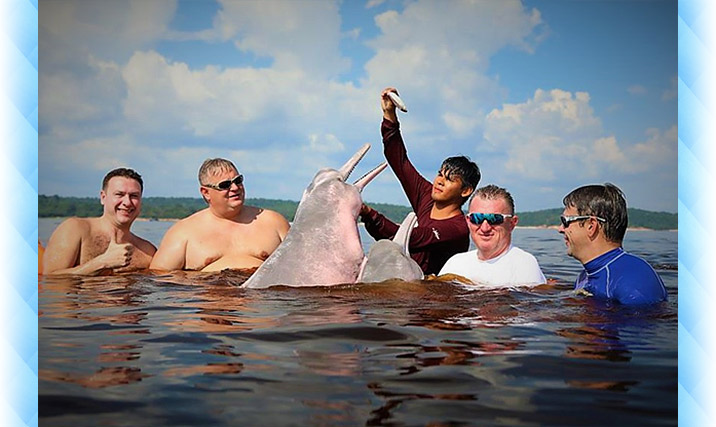 |
|
After dolphins we had dinner in the best meat restaurant of Manaus. |
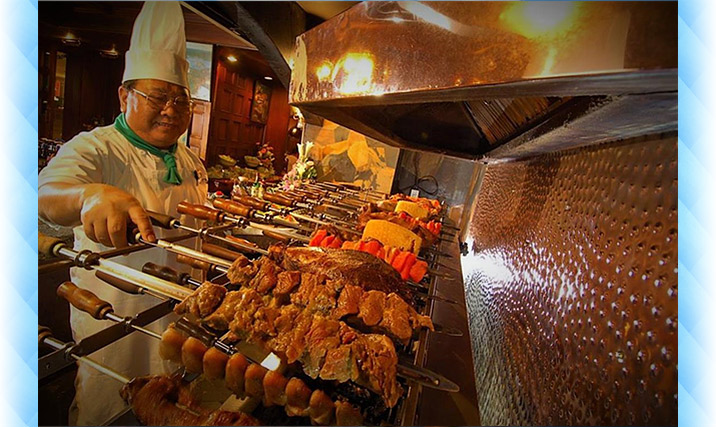 |
|
The next day we flew to the north of the state of Amazonas, took a speedboat, and by noon, we got to a lodge built right on the water at the entrance to the National Park |
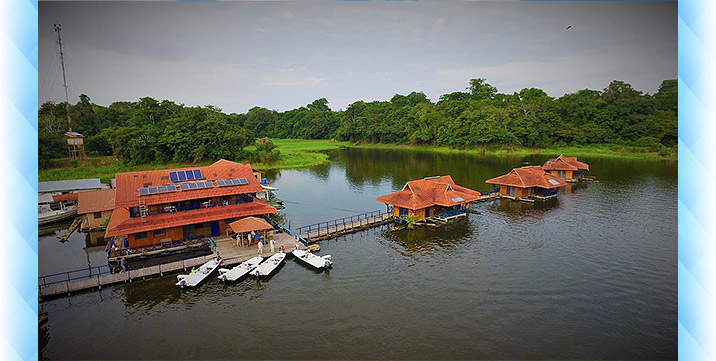 |
|
We got settled in our spacious rooms and began preparing our tackle. Sport fishing for arapaima is characterized by extremely high requirements for all the tackle items, fishing lines, in particular. Evgeny Danilichev brought the Daiwa fishing line with the test of 68 kilos from Russia.
The arapaima fishing technique in this particular place is fundamentally different from a traditional one. During the expeditions for this outstanding trophy a fisherman usually finds a lagoon in the depths of the jungle with 1 or 2 arapaimas left after the annual drop of the water level at the beginning of the dry season. As arapaima has an excellent appetite, it is quite easy to catch it, for a few months it eats all the fish in this small lagoon, so, it is just enough to bring live baits from the neighboring water, cast a few spinning rods from the shore or from a boat, and wait for arapaima to strike. |
|
The population of arapaima in the National Park (the place of our forthcoming fishing) is counted in thousands of specimens, and at the same time the feeding base is very extensive and there is always enough food for the predators. Live baits are absolutely inefficient because of the high density of piranhas in the water area. It is not that simple to make arapaima strike, but still possible. Last year during our test fishing with my wife we tried various fishing techniques and different baits. Some wobblers showed good results in the number of strikes, but at the same time 100% attempts failed. The mouth of arapaima is very dense inside and there is practically nothing for the hook to cling to. Wobblers just flew out of the mouth of this monster and very soon I stopped using them completely. |
|
Feather jigs with powerful hooks or fly fishing flies weighted by a sliding load turned out to be the most efficient. It is necessary to stress the fact that we were the first anglers to use spinning rods in this place. No one had ever caught a single arapaima with the help of a spinning rod here. Only fly fishermen had been fishing here before and that is why our guides had practically no experience in spinning fishing.
The first fishing proved the right approach. We caught the first trophy within an hour. Evgeny Shevchenko got a fish 150 cm long. The angler was happy and we had some wine in the evening to celebrate the start. There were some more strikes but, unfortunately, no more catches. |
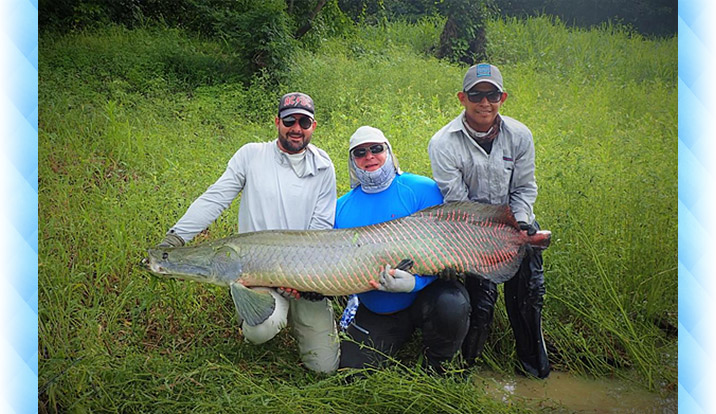 |
|
The next day (October 30th) we caught 3 arapaimas. At 9.30 a.m. Vyacheslav got a specimen 170 cm long. |
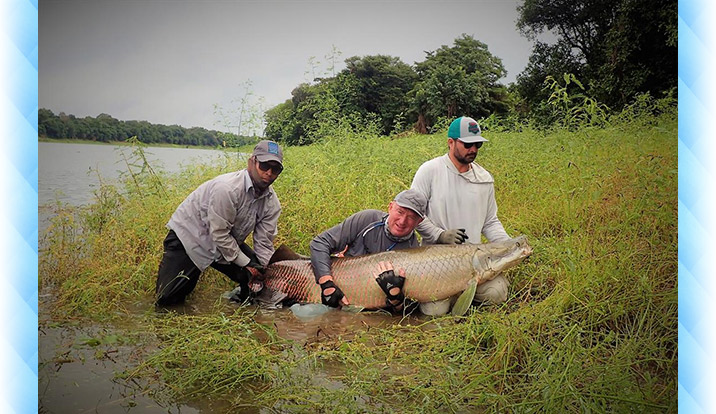 |
|
After lunch, at 3.40 p.m. Andrey Pyatko was lucky to catch a trophy 152 cm long. |
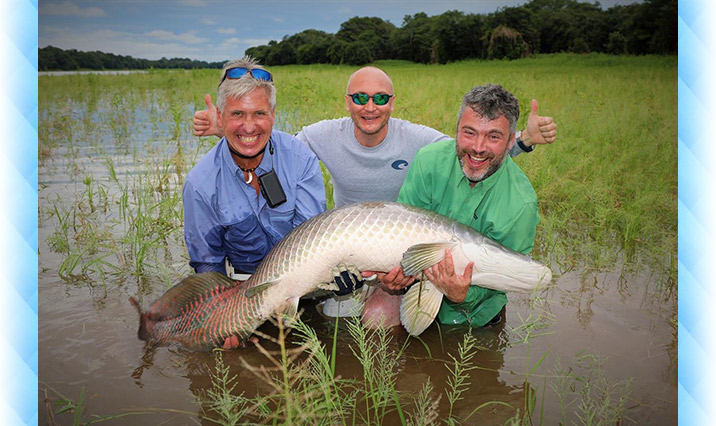 |
|
Then at 4.10 p.m. Evgeny Shevchenko came to the top again by landing a fish 173 cm long.
The number of strikes was estimated in tens and still there were a lot of losses, but positive dynamics and fishing experience accumulated with each hour of our fishing inspired us with the hope that each angler would finally possess at least one trophy.
At 10 o’clock in the morning on October 31st I was the first to score, a specimen 151 cm long, then at 11.10 a.m. Evgeny Shevchenko landed a monster 175 cm long, and at 4.15 p.m. Evgeny Danilichev showed the result of 142 cm. |
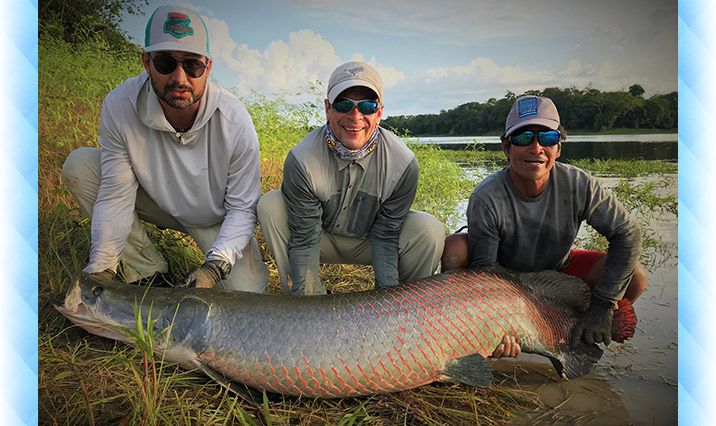 |
|
At the end of the same day I landed on board an arapaima 120 cm long.
Thus, we had a total of 4 arapaimas that day. Notwithstanding the fact that the total number of catches was not great, there were hundreds of coming outs of huge fish to the water surface, there were unbent hooks, broken spinning rods and a storm of emotions which are quite hard to describe. It is impossible to convey the intensity of our emotions even with the help of photos. |
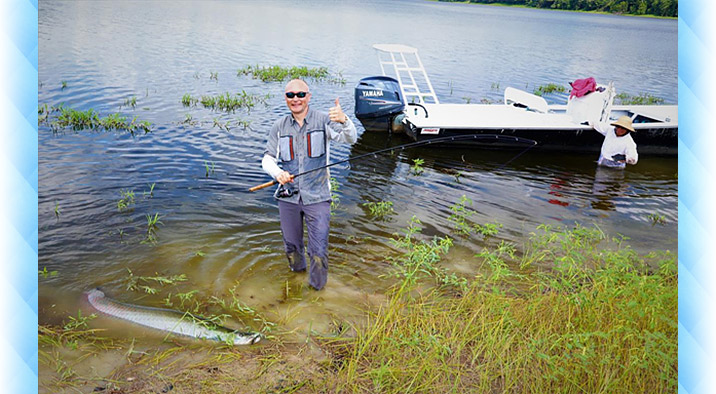 |
|
Every evening after dinner we were sitting at a large table on the veranda of our lodge sharing the impressions and experience we had got while fishing. It is noteworthy that everyone was happy with the success of others and there was no place for envy or other negative emotions at our table. |
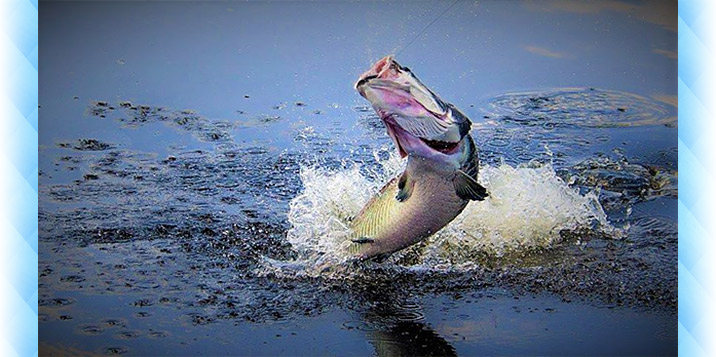 |
|
Evgeny Danilichev started November 1st with an outstanding arapaima over 250 cm long, which, by all means, was exceeding the current world record. The struggling was going on for about an hour and finally Evgeny managed to bring the fish to the shore but it was stuck into a grassy island. |
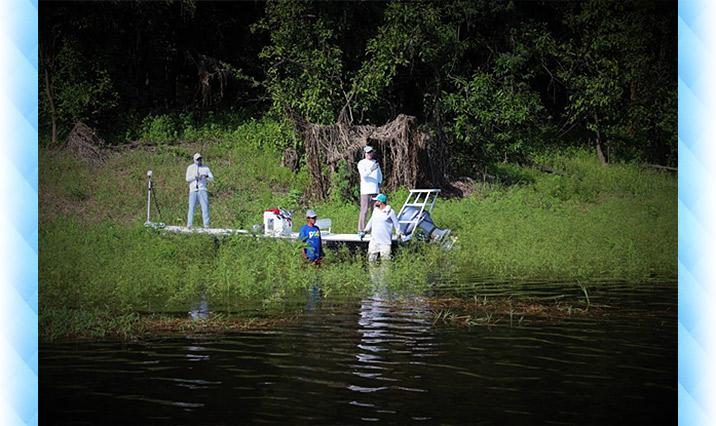 |
|
Not forcing the fish out of the water and showing a tremendous self-control the angler was finally able to take the arapaima out of its shelter. I was making video of the whole process and was preparing everything to register a new potential record when the fish made another jerk and tore the fishing line. We were the eyewitnesses of this misfortune and could not believe it, as it is physically impossible to tear a brand new fishing line with the test of 68 kilos. While analyzing the cause of this unfortunate incident we were watching the photos and videos and we found out that the huge arapaima had just swallowed the whole fluorocarbon lead which was about 1 m long. |
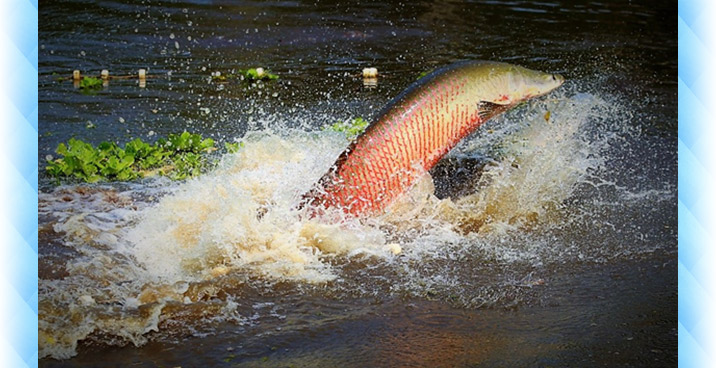 |
|
From that moment on, I decided to use the lead of about 2 m long to avoid such unpleasant situations in the future. That decreased the cast distance but ensured a successful outcome of the struggle with another “mastodon”.
At 11.50 a.m. Andrey Kononchuk caught arapaima 150 cm long, then at 12.10 p.m. I got another trophy 180 cm long. |
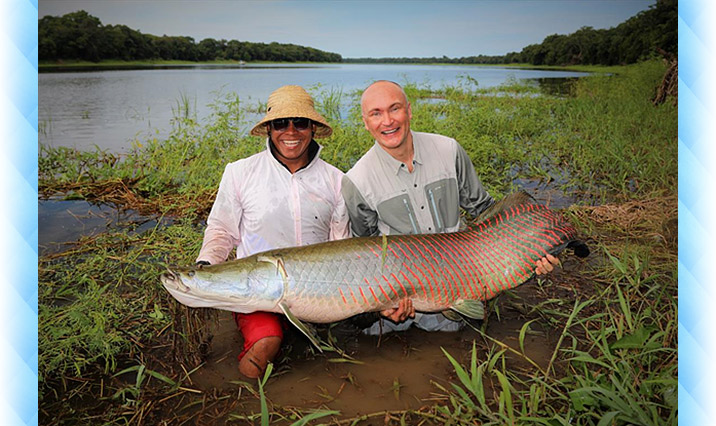 |
|
After lunch Evgeny Shevchenko showed a result of 150 cm and after that Georgy Galynsky caught the largest arapaima 185 cm long. Thus, each angler of our group caught at least one arapaima, and our group was the first in the history of the lodge to have at least one trophy per angler. But the truth, however, is that the spinning rod fishing technique is far more efficient for arapaima than fly fishing, so, we had a tactical advantage. In 2016 I managed to catch only one single arapaima using a fly fishing technique and that required inhuman efforts and self-control. |
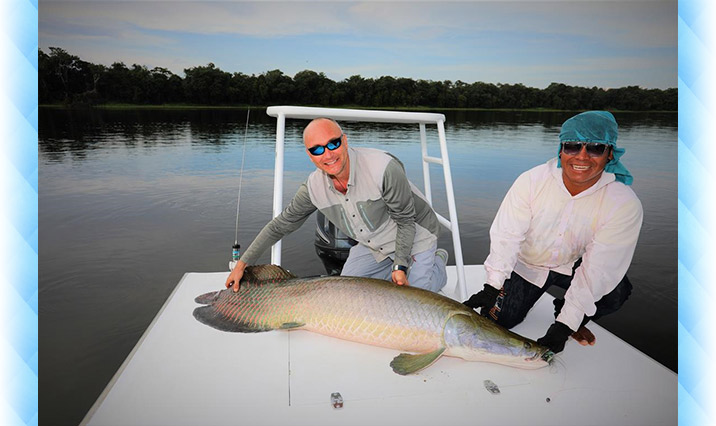 |
|
In the evening we celebrated our successful fishing and the fact that everyone had caught a trophy made us really happy.
November 2nd was the last day of our fishing and most fishermen of our group decided to go fishing for aruana the density of which is incredible here. |
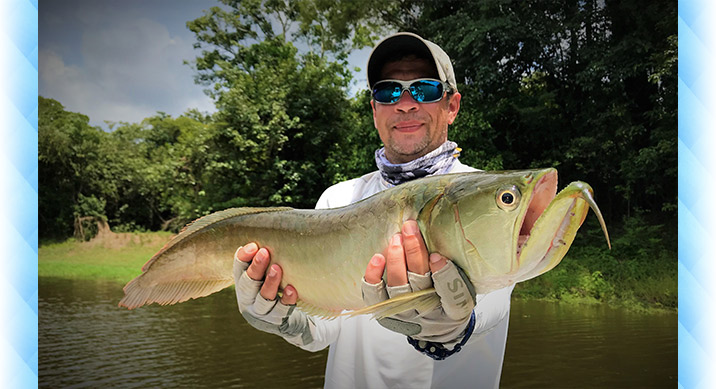 |
|
As for me, I decided to take advantage of the unique opportunity to improve my arapaima fishing skills. The thing is, I’m going to arrange a few tours for this prehistoric fish next year and a real experience of spinning fishing is of great value and gives the opportunity to increase the results of our groups and bring them to a new level. In the morning the strikes were quite weak because of the weather changes, but in the evening I finally found the key to this fish which is not simple at all. |
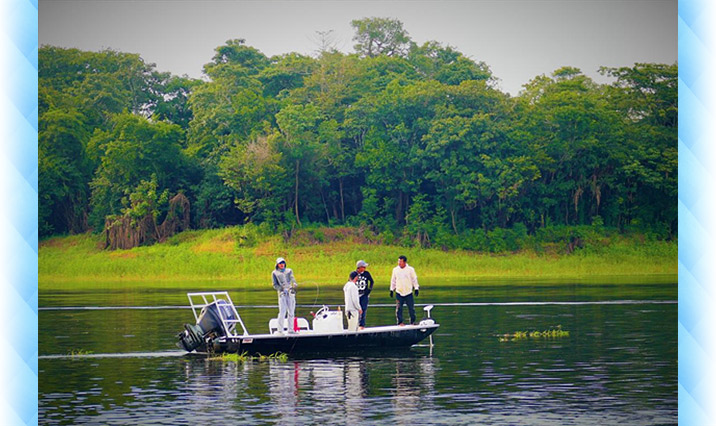 |
|
I had 5 strikes and 2 of them were successful. At 3.20 p.m. I landed a fish 178 cm long, and at 4.30 p.m. I was able to land a monster 210 cm long. |
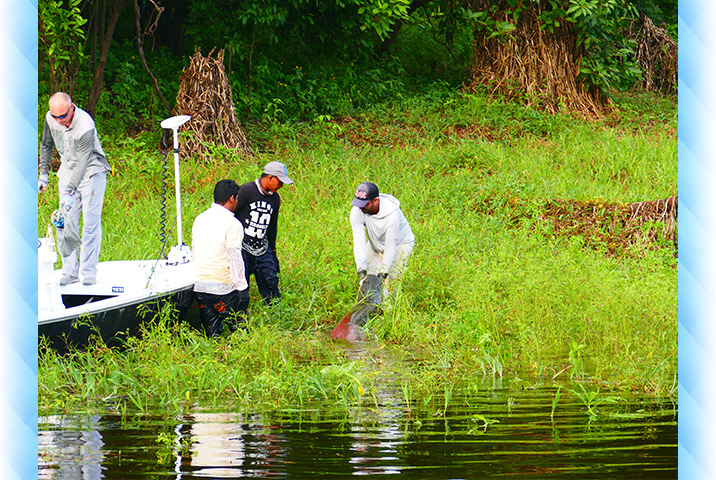 |
|
The fighting was going on for more than an hour, and having seen the size of the trophy, the guides called all the boats to take a photo with the huge fish. I managed to land the fish on the second try only, and it was not that easy, but our unique photos will remind us about our great fishing and the atmosphere of friendship and fun. We had a total of 15 arapaimas after 4 ½ days of fishing. |
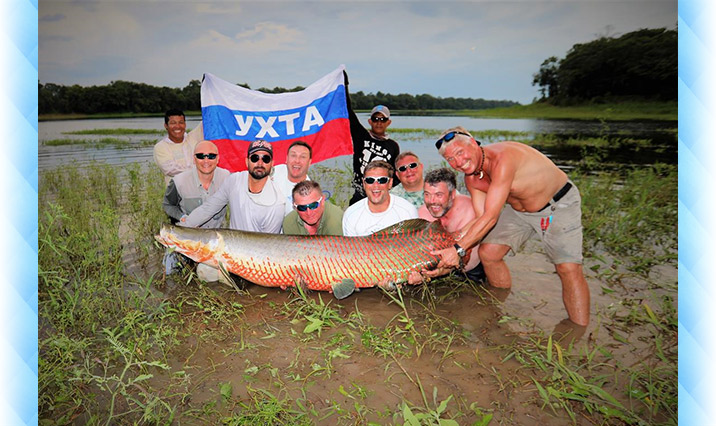 |
|
We are inviting you to arapaima fishing in Brazil in the upcoming season (September – November)! Learn more about other destinations of Royal Safari! |